Jingru Yang
Visual-Linguistic Agent: Towards Collaborative Contextual Object Reasoning
Nov 15, 2024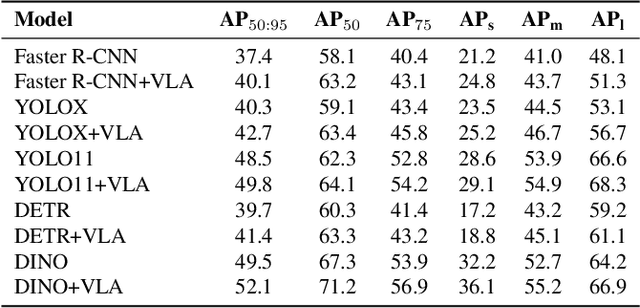
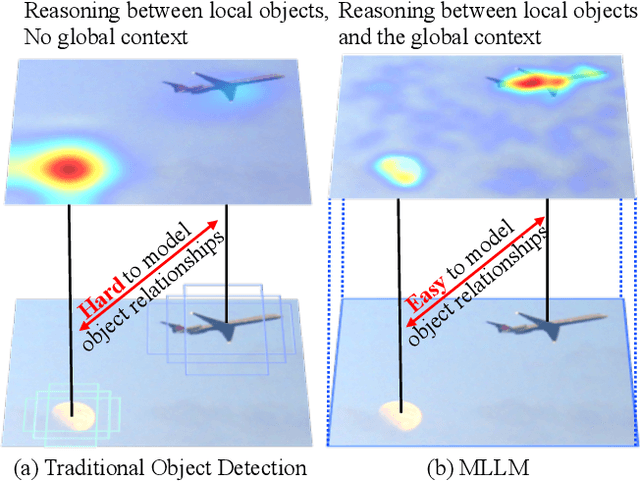

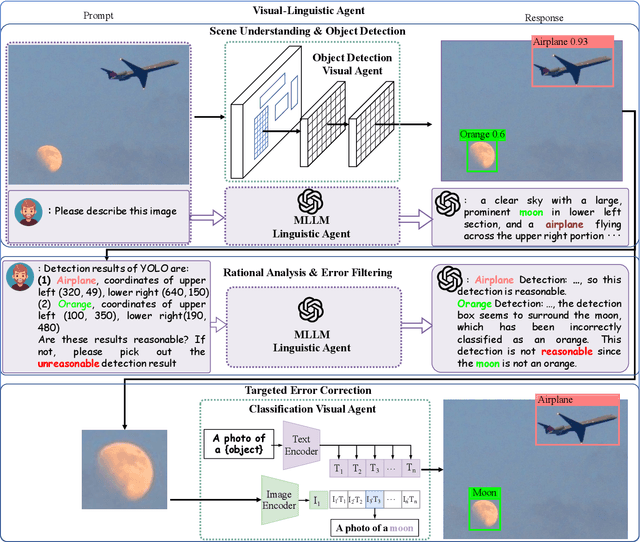
Abstract:Multimodal Large Language Models (MLLMs) excel at descriptive tasks within images but often struggle with precise object localization, a critical element for reliable visual interpretation. In contrast, traditional object detection models provide high localization accuracy but frequently generate detections lacking contextual coherence due to limited modeling of inter-object relationships. To address this fundamental limitation, we introduce the \textbf{Visual-Linguistic Agent (VLA), a collaborative framework that combines the relational reasoning strengths of MLLMs with the precise localization capabilities of traditional object detectors. In the VLA paradigm, the MLLM serves as a central Linguistic Agent, working collaboratively with specialized Vision Agents for object detection and classification. The Linguistic Agent evaluates and refines detections by reasoning over spatial and contextual relationships among objects, while the classification Vision Agent offers corrective feedback to improve classification accuracy. This collaborative approach enables VLA to significantly enhance both spatial reasoning and object localization, addressing key challenges in multimodal understanding. Extensive evaluations on the COCO dataset demonstrate substantial performance improvements across multiple detection models, highlighting VLA's potential to set a new benchmark in accurate and contextually coherent object detection.
Morpho-Aware Global Attention for Image Matting
Nov 15, 2024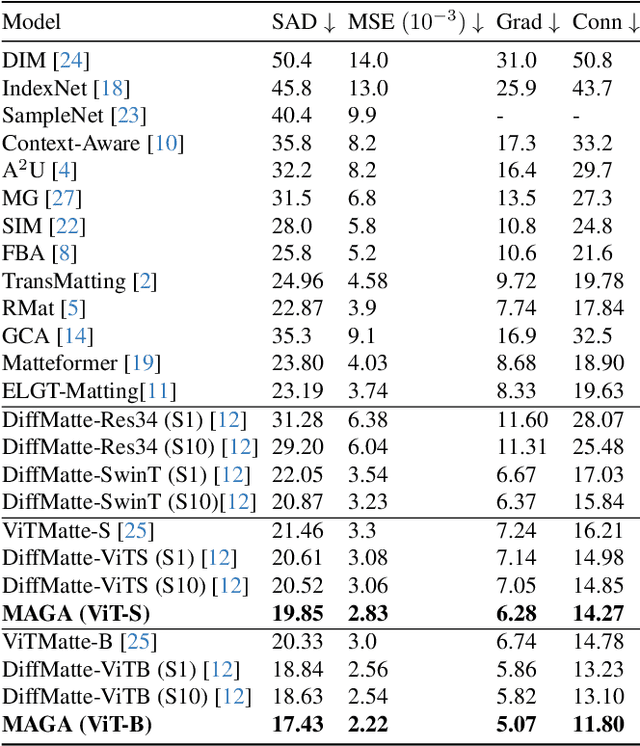
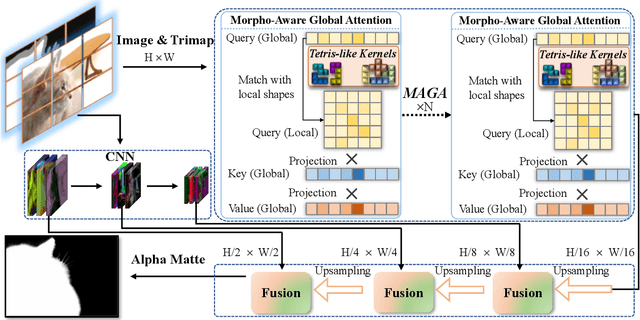
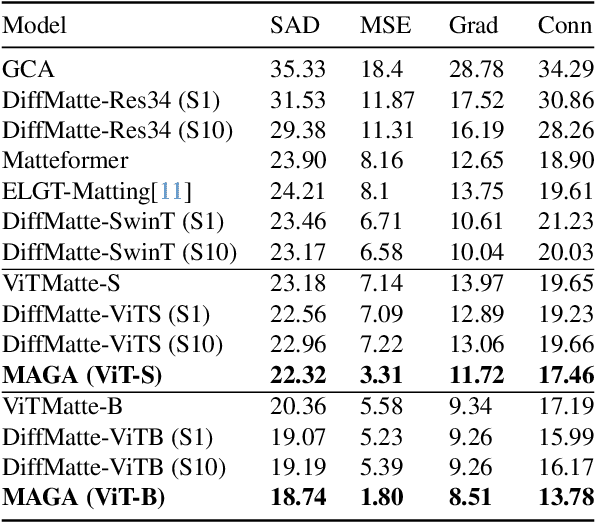
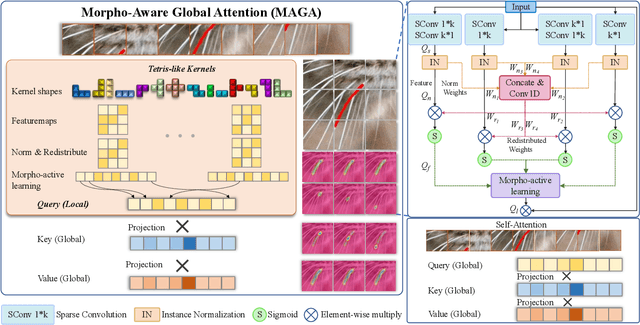
Abstract:Vision Transformers (ViTs) and Convolutional Neural Networks (CNNs) face inherent challenges in image matting, particularly in preserving fine structural details. ViTs, with their global receptive field enabled by the self-attention mechanism, often lose local details such as hair strands. Conversely, CNNs, constrained by their local receptive field, rely on deeper layers to approximate global context but struggle to retain fine structures at greater depths. To overcome these limitations, we propose a novel Morpho-Aware Global Attention (MAGA) mechanism, designed to effectively capture the morphology of fine structures. MAGA employs Tetris-like convolutional patterns to align the local shapes of fine structures, ensuring optimal local correspondence while maintaining sensitivity to morphological details. The extracted local morphology information is used as query embeddings, which are projected onto global key embeddings to emphasize local details in a broader context. Subsequently, by projecting onto value embeddings, MAGA seamlessly integrates these emphasized morphological details into a unified global structure. This approach enables MAGA to simultaneously focus on local morphology and unify these details into a coherent whole, effectively preserving fine structures. Extensive experiments show that our MAGA-based ViT achieves significant performance gains, outperforming state-of-the-art methods across two benchmarks with average improvements of 4.3% in SAD and 39.5% in MSE.
 Add to Chrome
Add to Chrome Add to Firefox
Add to Firefox Add to Edge
Add to Edge